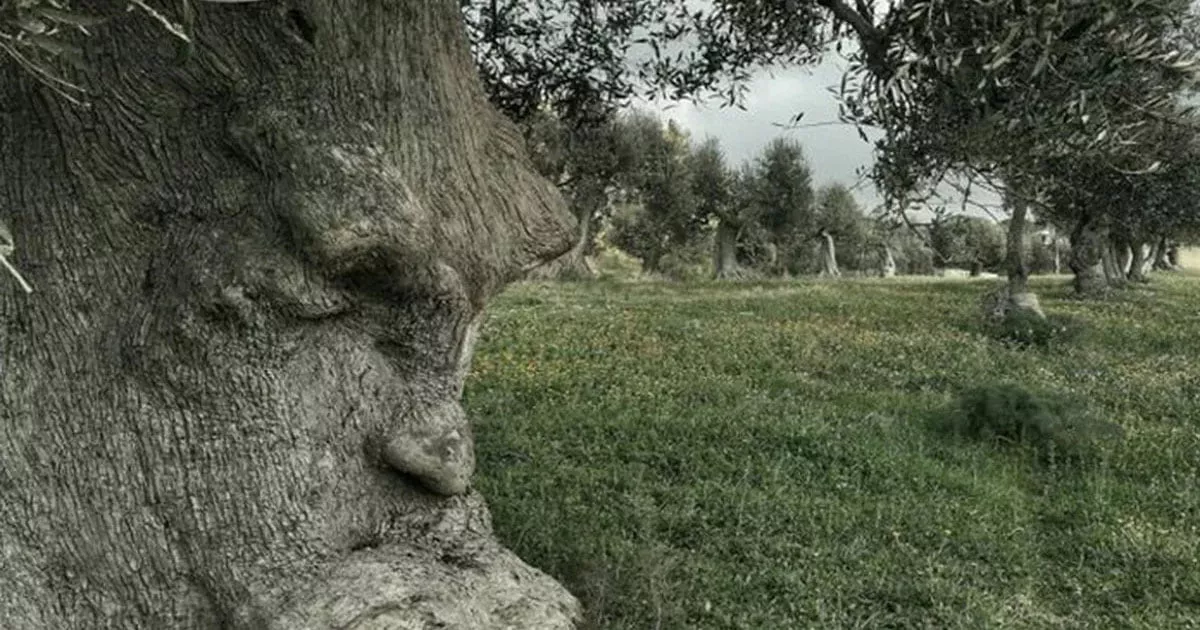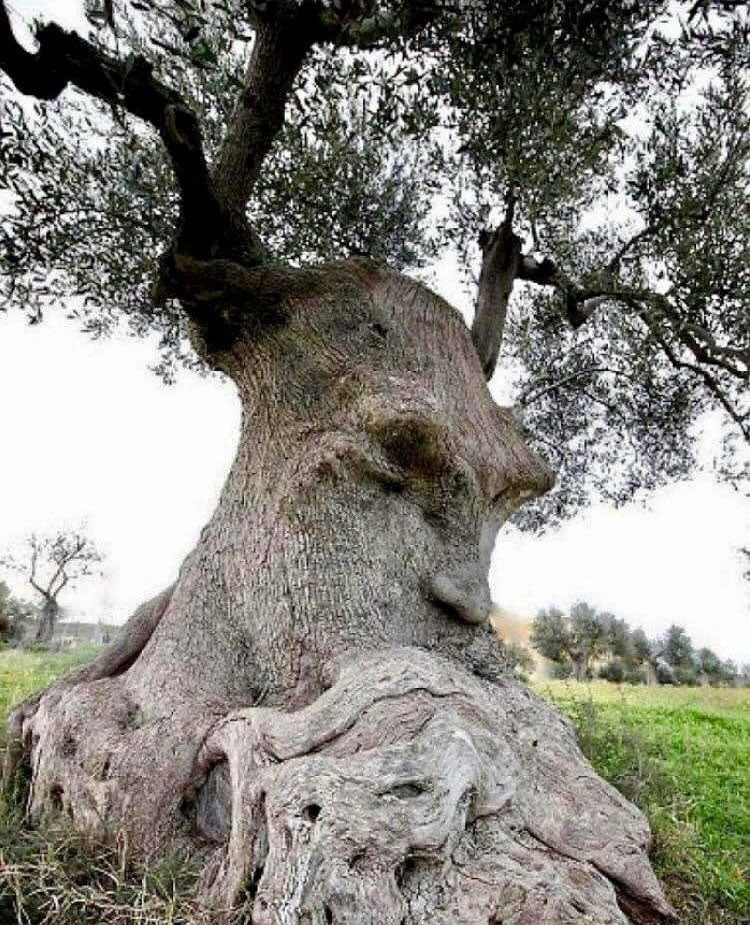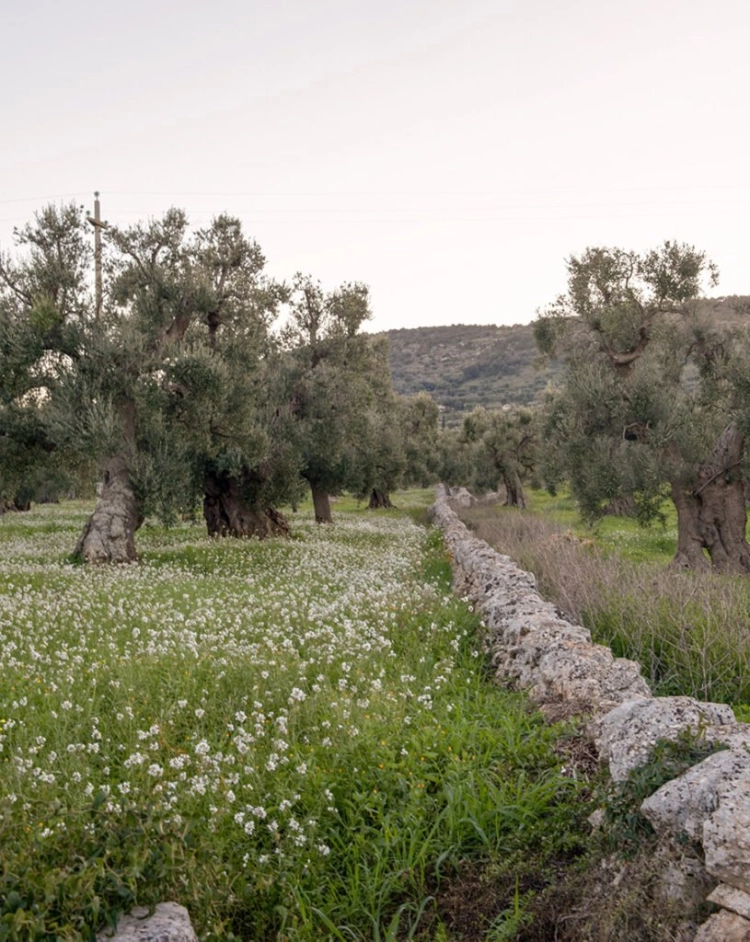

In the quiet town of Ginosa, nestled in the heart of Puglia, Italy, stands a tree unlike any other. Known as the “Thinking Tree,” this ancient olive tree has witnessed the rise and fall of empires, the passage of countless generations, and the steady rhythm of life for as long as anyone can remember. If only it could speak, the stories it would share—tales of ancient peoples who once sought shade beneath its branches, or the whispers of winds carrying secrets from far-off lands.
Believed to be over 1,500 years old, with some suggesting it could be as ancient as 4,000 years, the Thinking Tree has quietly captivated those who pass by, and in recent years, captured the imagination of thousands on social media. But this tree is just one piece of a much larger story. Puglia, a land blanketed with millions of olive trees, has been home to these groves for centuries. Each tree, with its gnarled trunk and twisted form, seems to have its own personality—some even appear to wear the face of time itself, as if the earth itself has etched its history into the bark.

The story of Puglia’s olive trees stretches far beyond the present, reaching deep into ancient history. These trees, revered throughout time, were symbols of peace, abundance, and wisdom. In Roman times, they were prized not only for their fruit but for the rich, golden oil they produced. In fact, legend ties the origins of the olive tree to Rome’s very beginnings, with tales of Remus and Romulus being born beneath the shelter of an ancient olive tree, believed to provide divine protection.
For centuries, Puglia’s olive groves have stood as silent witnesses to history. The trunks, twisted and gnarled with age, bear the scars of time, weather, and human cultivation. These trees are more than just agricultural assets—they are living relics, bridging past and present. Each tree is unique, shaped by the hands of generations who cared for them, harvested their fruit, and relied on the oil they produced. From the Roman Empire to modern Italy, these olive groves have been vital to the region’s economy and culture, producing some of the world’s finest olive oil.
The olive groves of Puglia, some of the oldest continually cultivated in the world, carry the imprints of centuries of human touch. The myriad shapes of these trees, each unique in its form, stand as silent testimonials to the generations of hands that have lovingly tended and harvested them. Each gnarled trunk and twisted branch tells a tale of endurance and adaptation, shaped by the rhythms of nature and the needs of those who have depended on their fruits. As such, these ancient groves encapsulate a vital piece of human history and a timeless bond between nature and mankind.
The olive oil, a cherished product of these trees, has a history as rich as the groves themselves. Its initial use was restricted to the elite echelons of society, with Pharaohs and priests using it for anointment ceremonies. However, as cultivation spread and production increased, olive oil transitioned from a luxury to a necessity, finding a place in the everyday lives of people.
It became an integral part of various sectors, serving as a fuel source, a culinary staple, a key ingredient in cosmetics, and a base for medicinal preparations. The importance of olive oil is underscored by the fact that the English word “oil” has its roots in the Latin word “Oliva,” which means “olive tree.”

A menacing threat has cast a shadow over the future of these ancient olive trees, introducing a period of uncertainty and concern. A bacterial species, Xylella fastidiosa, first identified in 2013, has emerged as a formidable adversary to their survival. This bacterium invades the tree’s xylem – the essential vascular tissue used for transporting water and nutrients. The consequence of this invasion is a debilitating restriction on the tree’s vital sustenance, leading to a slow, yet relentless, process of tree mortality.
The severity of this situation is underscored by the fact that the disease does not confine itself to Italy’s boundaries. Its impact is felt across various parts of Europe, affecting countless olive trees and threatening the regions’ olive oil industries. The loss extends beyond mere economic considerations; it also signifies a potential erasure of cultural heritage and centuries-old ecosystems that have thrived around these groves.
In response to this dire situation, concerted efforts are being mobilized to counter this existential threat. Scientists, farmers, and policymakers are joining forces in a bid to neutralize the bacterial invasion and ensure the survival of these trees. A combination of research to understand the bacteria’s behavior, development of resistant olive tree varieties, and containment strategies to prevent further spread are some of the measures being explored.
Despite the challenges posed by Xylella fastidiosa, there’s a shared determination to protect these olive trees – these enduring symbols of history, culture, and biodiversity. The struggle against this disease is not just about safeguarding a species, but about preserving an invaluable legacy for future generations.